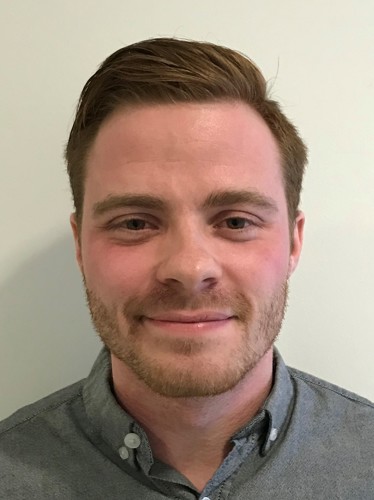Jannik Hjortshøj Larsen
Department of Clinical Biochemistry and Pharmacology

Translating Genetic Risk of Abdominal Aortic Aneurysm into Valuable Mechanistic Knowledge
Abdominal aortic aneurysm (AAA) is a disease of the aorta - the largest blood vessel in the body. AAA is diagnosed when the aortic diameter reaches 3 cm. The increase in aortic diameter is asymptomatic until sudden rupture of the aorta, which leads to massive internal bleeding. Such an event is a common cause of death of men above the age of 65. Today, the only treatment option for AAA patients is surgical repair. This procedure is not without risk and is only performed once the aortic diameter reaches 5 cm. AAA patients that have an aortic diameter below 5 cm are monitored by periodic re-evaluation until the criteria for surgery eligibility is met. This situation dramatically decreases the life quality of patients: They are aware that they carry around a “ticking bomb” and they know that there is nothing to do about it.
To develop a medical therapy for AAA, it is essential to identify central disease mechanisms that can be targeted therapeutically. The general perception in various research communities is that the key to uncover such mechanisms lies within data from large-scale genetic studies comparing patient genomes (DNA) to the genomes of healthy controls. However, translating the gold-mine of genetic information into meaningful biology is challenging as there has been no efficient way to test whether disease-associated genes are in fact causal and thereby attractive targets for therapy.
The AAA research field is currently at a point in which data from genetic studies are accumulating, and in the Spring of 2020, the largest single genetic study on AAA to date (led by co-supervisor of this project, Professor Philip Tsao, Stanford University) will be concluded. For these reasons, I believe that this PhD project is highly warranted as it proposes a novel research design for overcoming the above-mentioned translational challenges. Indeed, the project is timely, as it builds on cutting-edge methodology which was only recently established in our research group.
The project aims at systematically testing a list of eight candidate genes identified unbiasedly from well-powered human genetic studies. Three of these genes appear to outplay their role in liver tissue, while five outplay their role in artery tissue. I hypothesize that these genes represent crucial mechanisms involved in AAA development.
To test this hypothesis, we have designed a project composed of three aims. In the two first aims, I will increase candidate gene expression in liver (AIM 1) or artery (AIM 2) tissues in mice, and identify which of the candidate genes that have the most pronounced effect on experimentally induced AAA. In AIM 3, the candidate genes having the most pronounced effect on aortic diameter in AIMs 1 and 2 will be validated using patient material from the Odense Artery Biobank, the Viborg Vascular Screening Trial and the Danish Cardiovascular Screening Trial cohorts.
I have been a part of the hosting research group since January 2018 working on several projects that have resulted in manuscripts of which one is now published (with me as first author). During my time in the research group, I have been trained various methods and models and acquired expertise relevant for the PhD project proposal. I am dedicated, hard-working and highly motivated to continue my training and mature as a scientist. In the PhD project, I will be supervised by a research team that collectively possess the required experience and know-how to bring the project to success.
Taken together, the unique methodology and novel design described in the proposal represent a powerful approach to translate human genetics into valuable biological knowledge that will ultimately stimulate development of new treatment strategies for the benefit of patients. I (as well as the entire research team) expect that the results obtained will be of vast interest to the entire AAA research community and strengthen the leading position of Odense University Hospital in this field of research.
